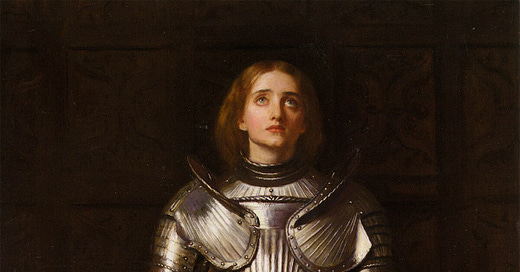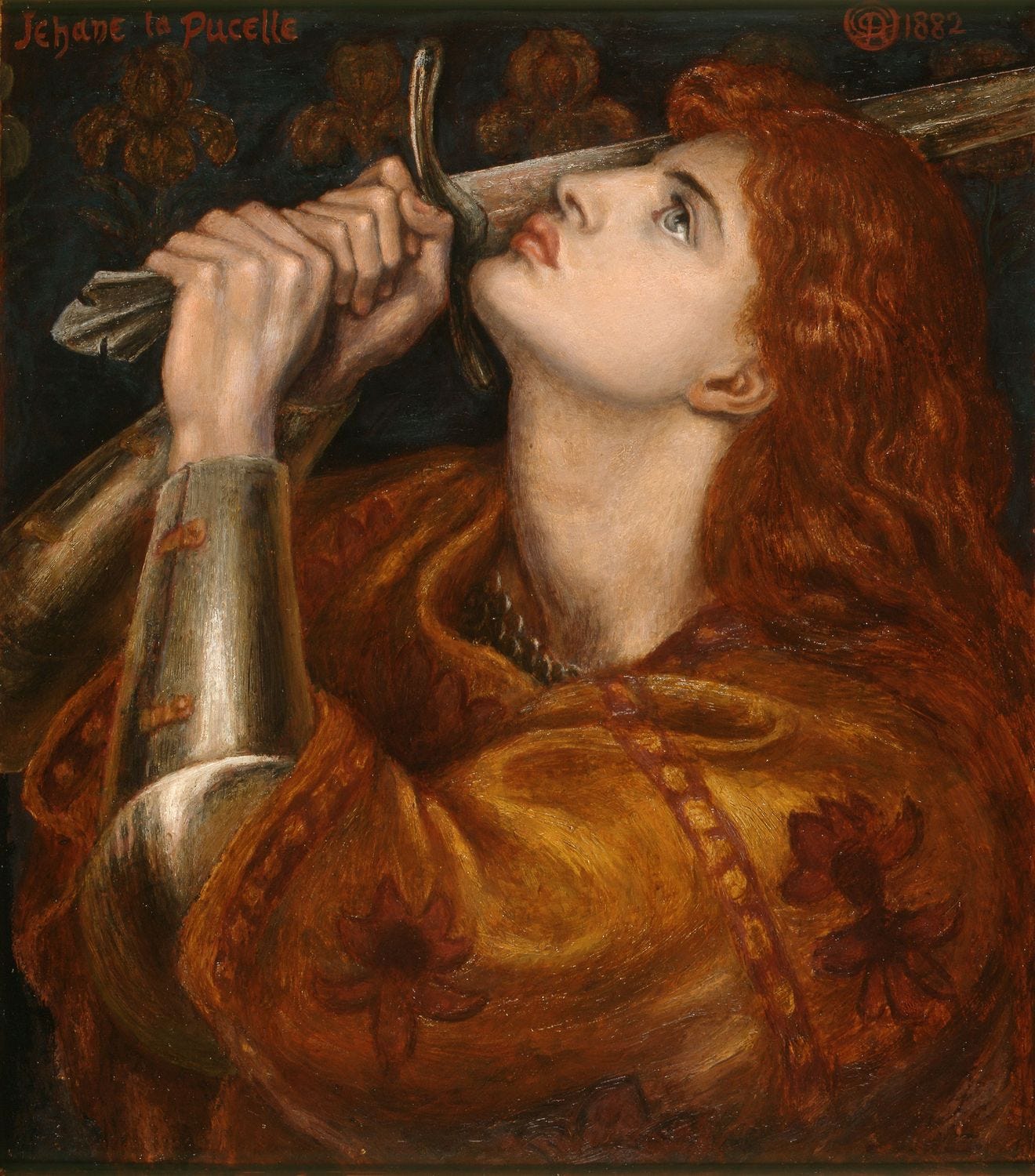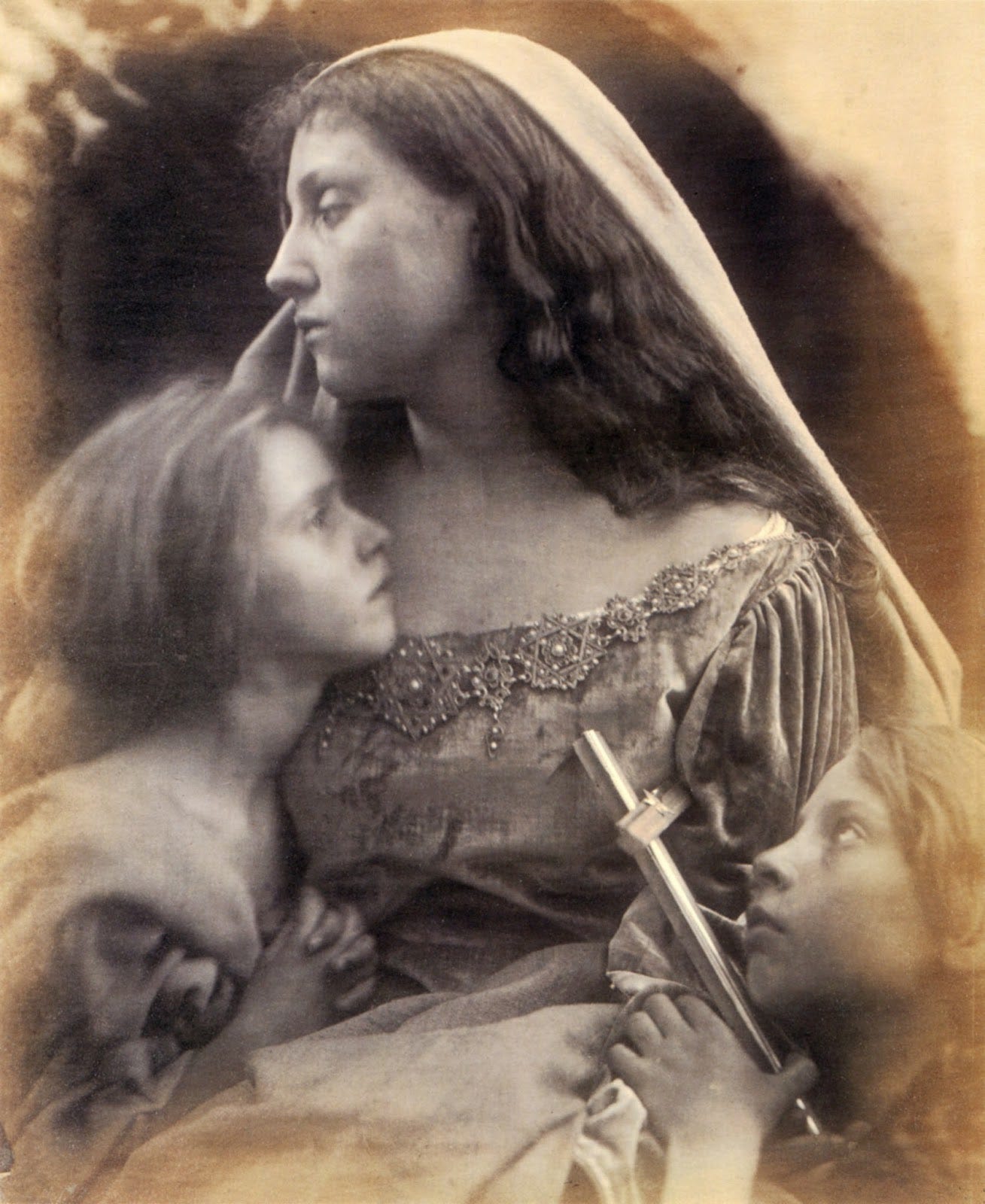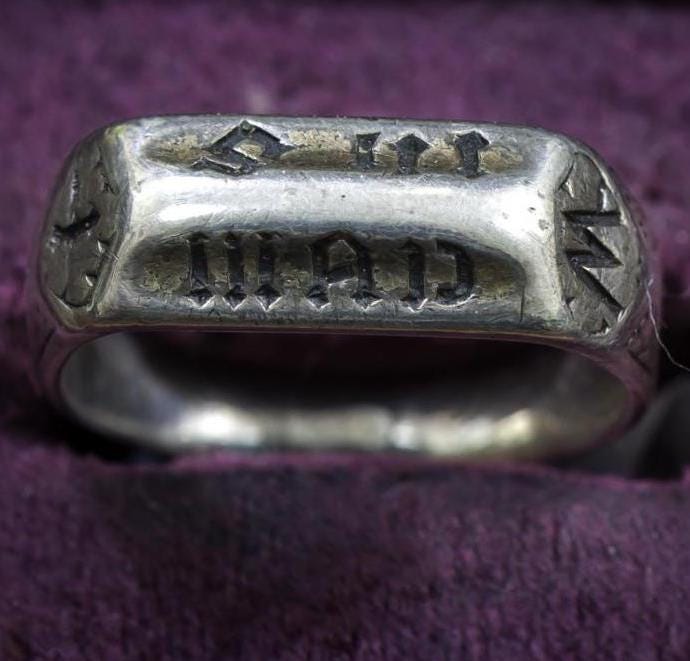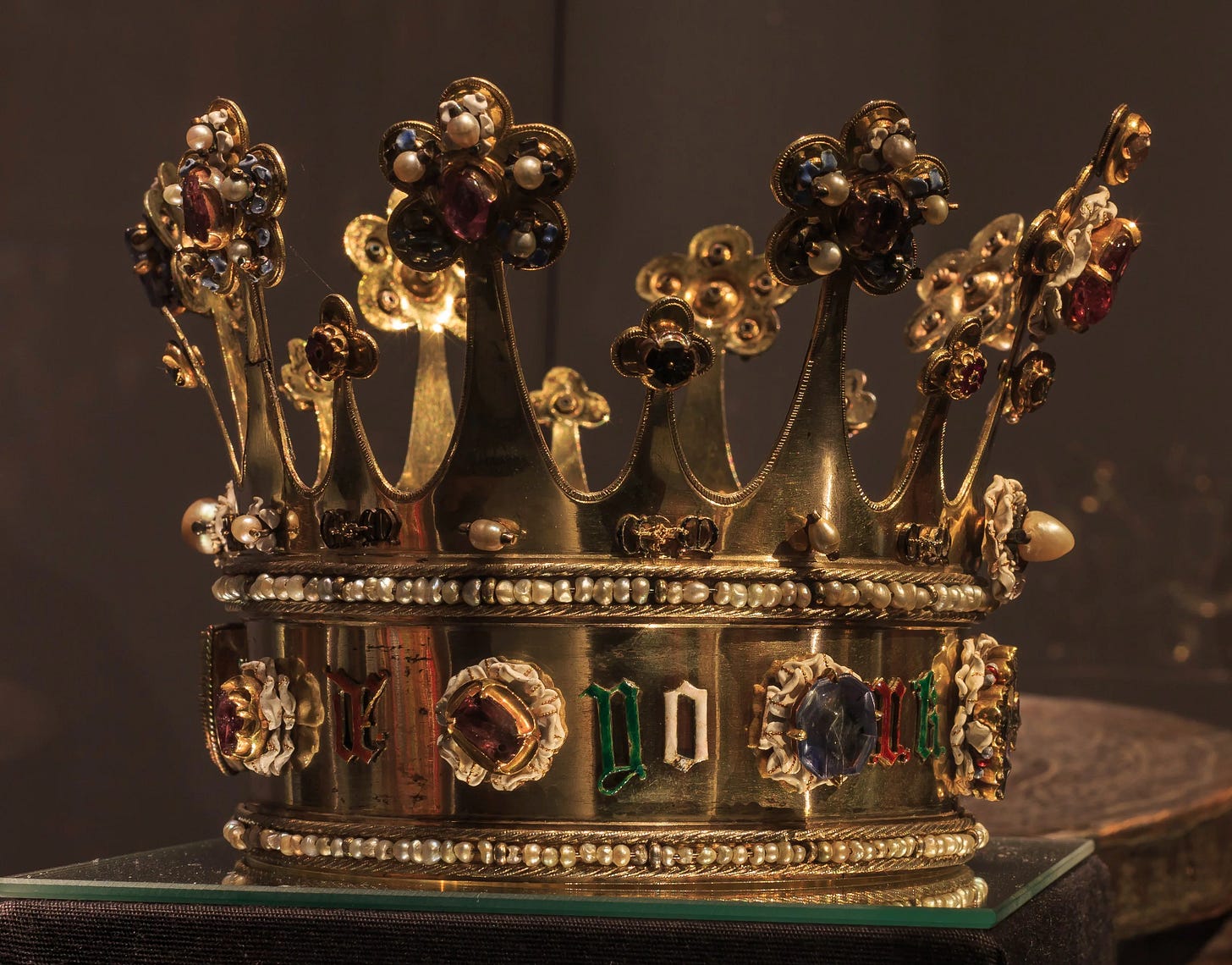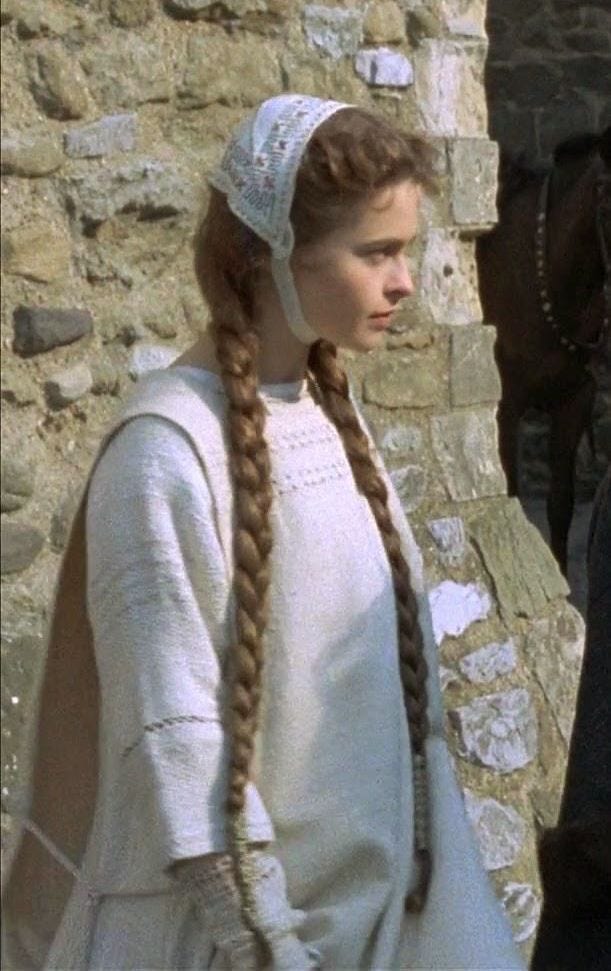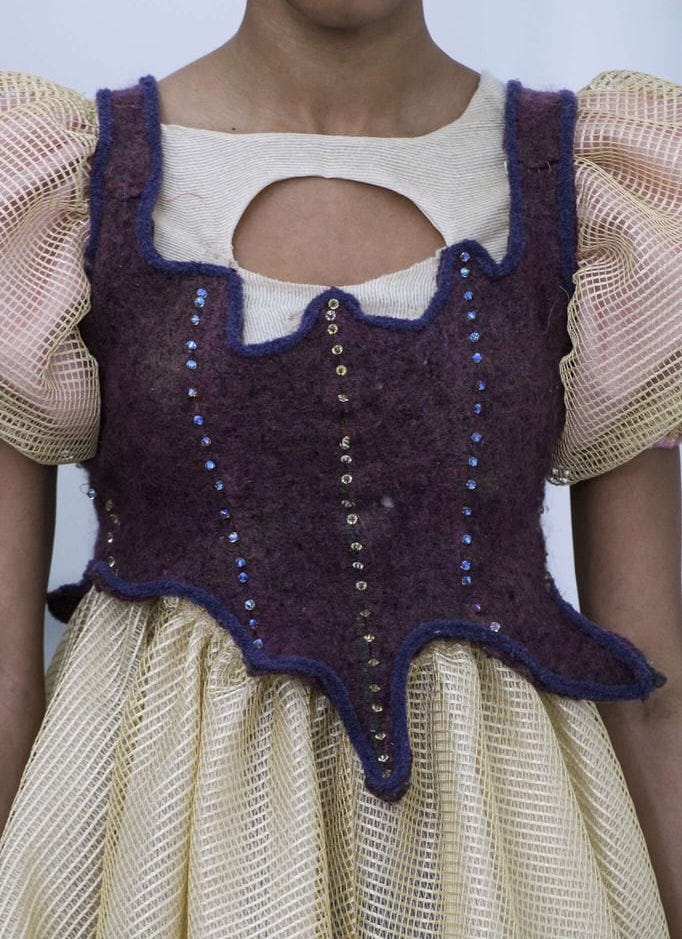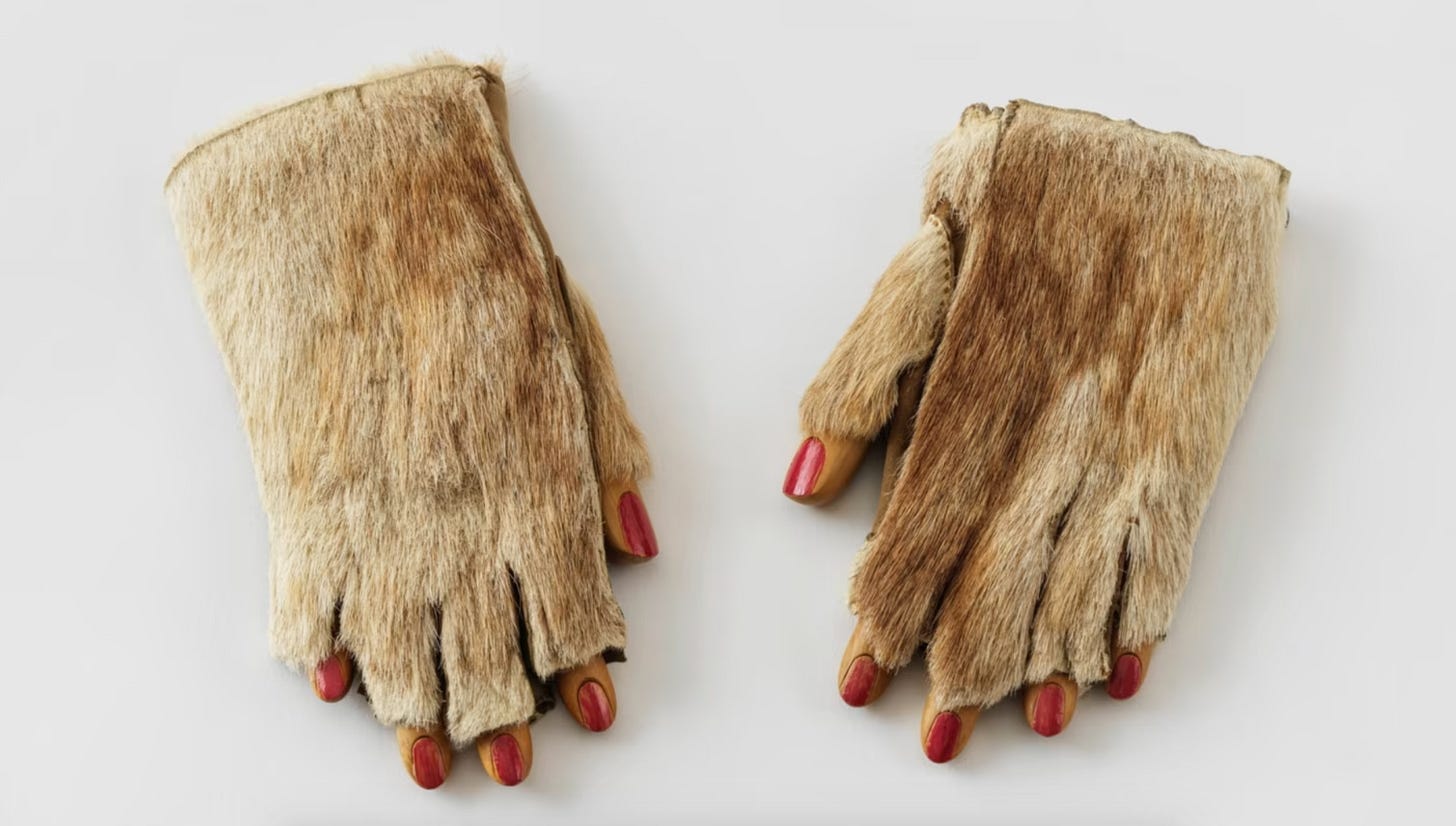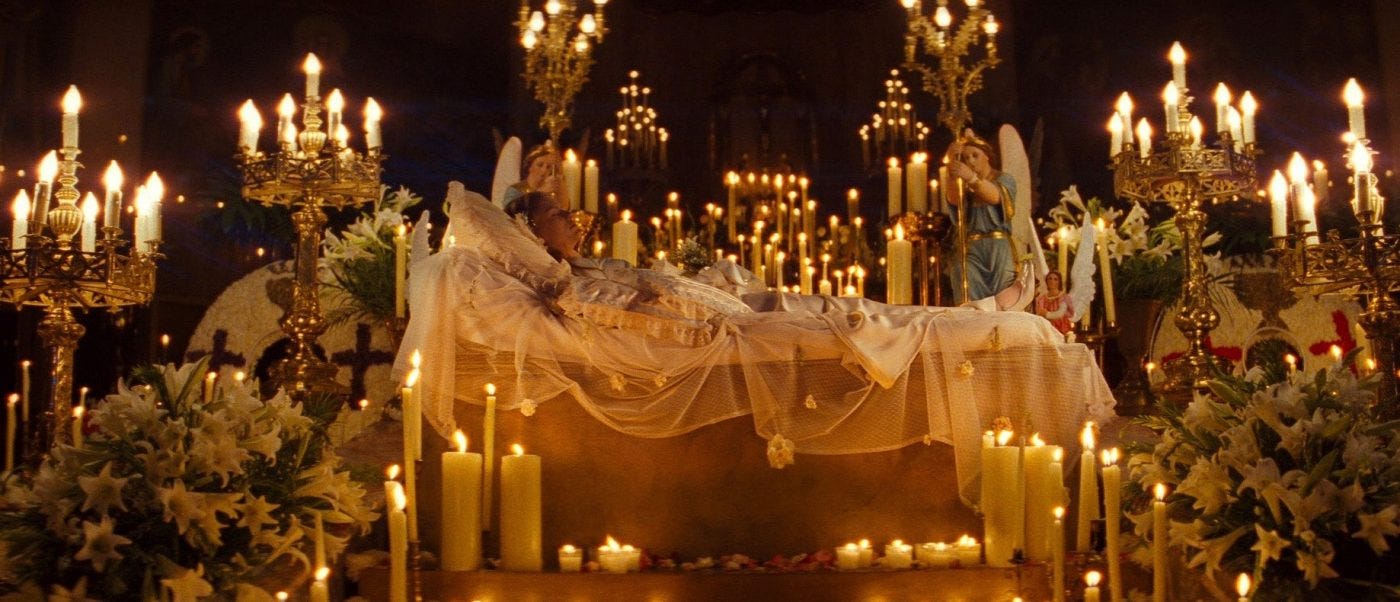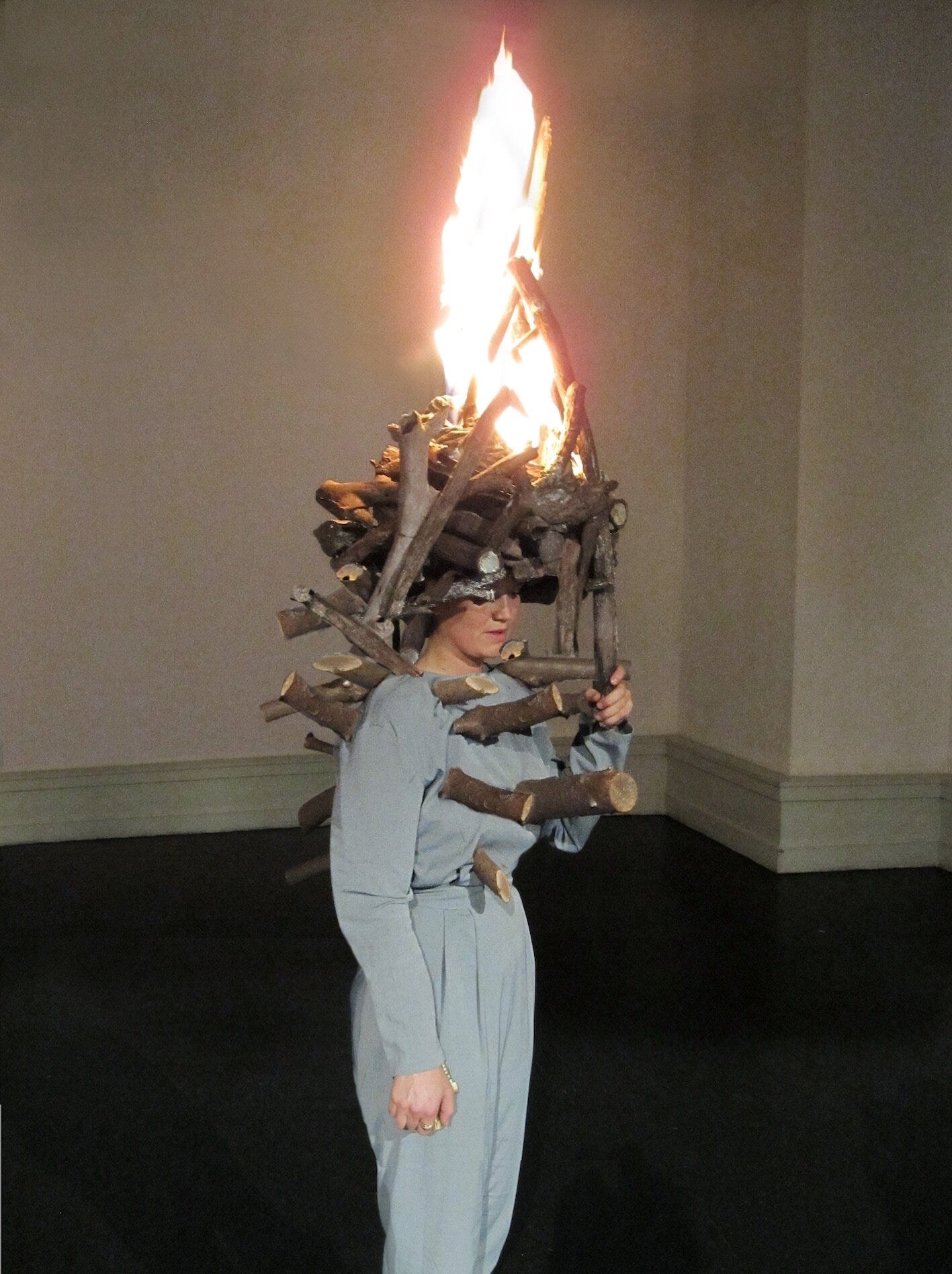Guided By Saints: The Enduring Allure of Joan, and Our Return to the Medieval (Again)
There is a Baz Luhrmann-directed Joan of Arc biopic on the horizon. Last month, Warner Bros. executives, joined by production and marketing teams, gathered at Chateau Marmont for an initial script-read.
Chateau Marmont, often referred to as “Hollywood’s Castle in the Clouds,” displays its name in the appropriately medieval-inspired typeface, Libra Uncial, created by Sjoerd Hendrik de Roos in 1938.
For guests, it is practically law to use the hotel’s complimentary branded pens and writing paper to write a profound thought in their best cursive and share it on their Instagram story.
Joan has been depicted on screen many times.
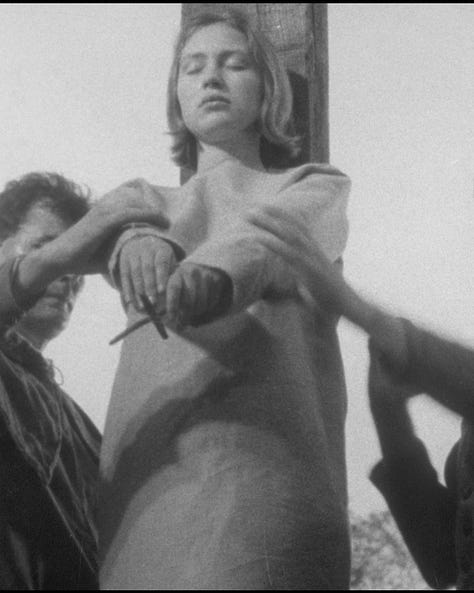

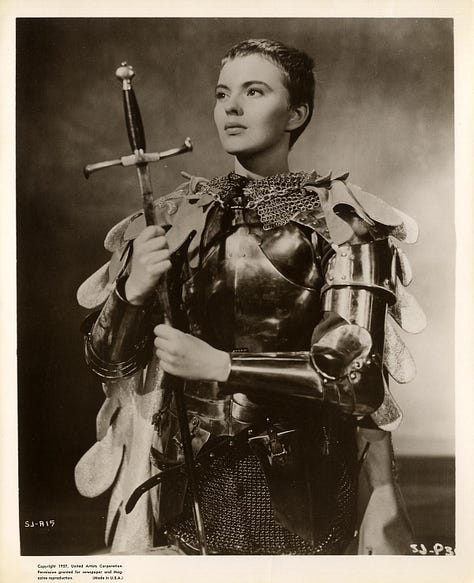
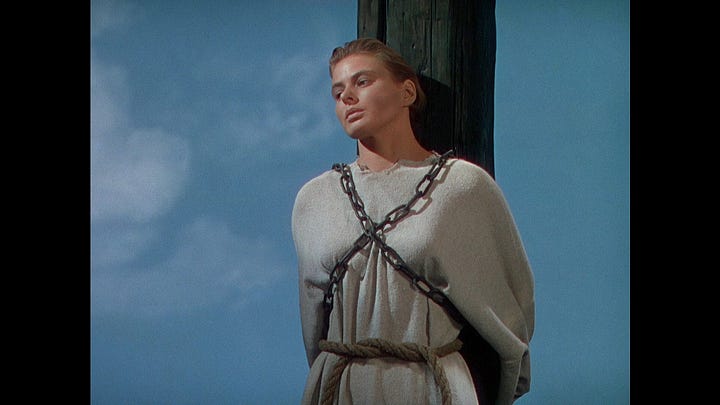
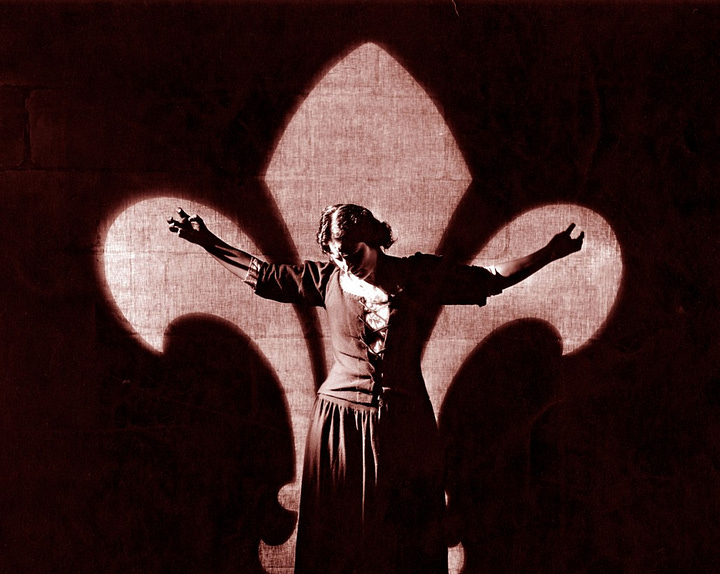
Who will play her this time?
My guesses: Aimee Lou Wood, Mia Goth, or Saura Lightfoot-Leon.
Joan of Arc is, in a sense, the perfect patron saint of what Pinterest coined, in late 2024, as “Castlecore.” -core this! -core that! I know.
Pinterest and TikTok, have become The Source for identifying, naming, defining, and disseminating into collaborative moodboards, '-cores' and ‘aesthetics’ at speed. You have probably heard of “Tomato Girl”, “Blokette”, “Mob Wife”, “Cottage Core”. Yeah.
Well, the medieval era has once again become a costume box to be raided for inspiration.
This time it is called ‘Castlecore’.
But what about these past flirtations with the medieval? In the late 1960s, following the Space Race and rapid technological advancement, there was a collective pause to take a nostalgic glance in the medieval direction.
Cue that widely shared image of Pattie Boyd, you’ve seen it.
She is wearing a medieval mini dress:
I spoke to Karl Ferris, the credited photographer, who reveals he shot it “in 1967 for Honey Magazine”. He shares, with conviction, that “those medieval style tunics on Pattie and Jenny Boyd were designed by me.”
Also in the late ‘60s: Gunne Sax’s “leg-of-mutton” and “Juliet” sleeves (then, and now, highly coveted and collectable, I want), and Joan Baez’s deep engagement with medieval ballads.
In the 1990s, on the cusp of the digital revolution becoming fully mainstream, a similar moment of looking back was indulged in.
Cue the Pinterest-famous, medieval-inspired collections of Betsey Johnson (1997) and Anna Sui (1998). Sui’s final look was a pantomimic knight in a polystyrene horse made by James Coviello.
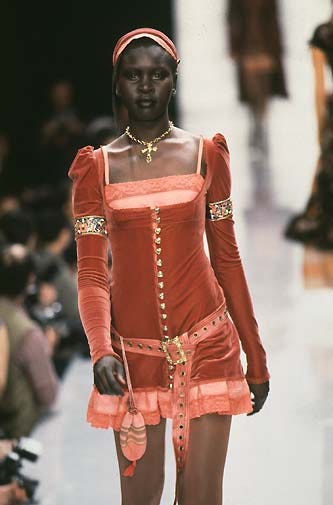
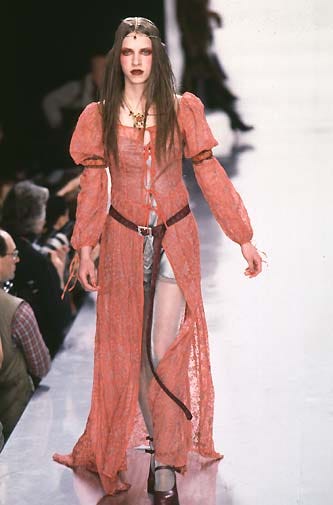
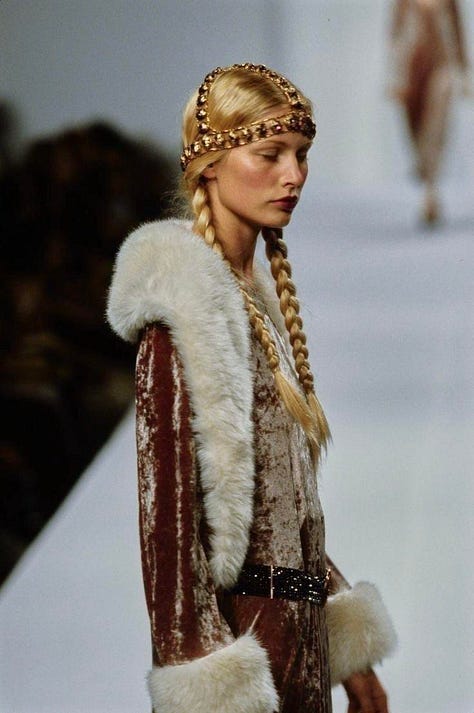
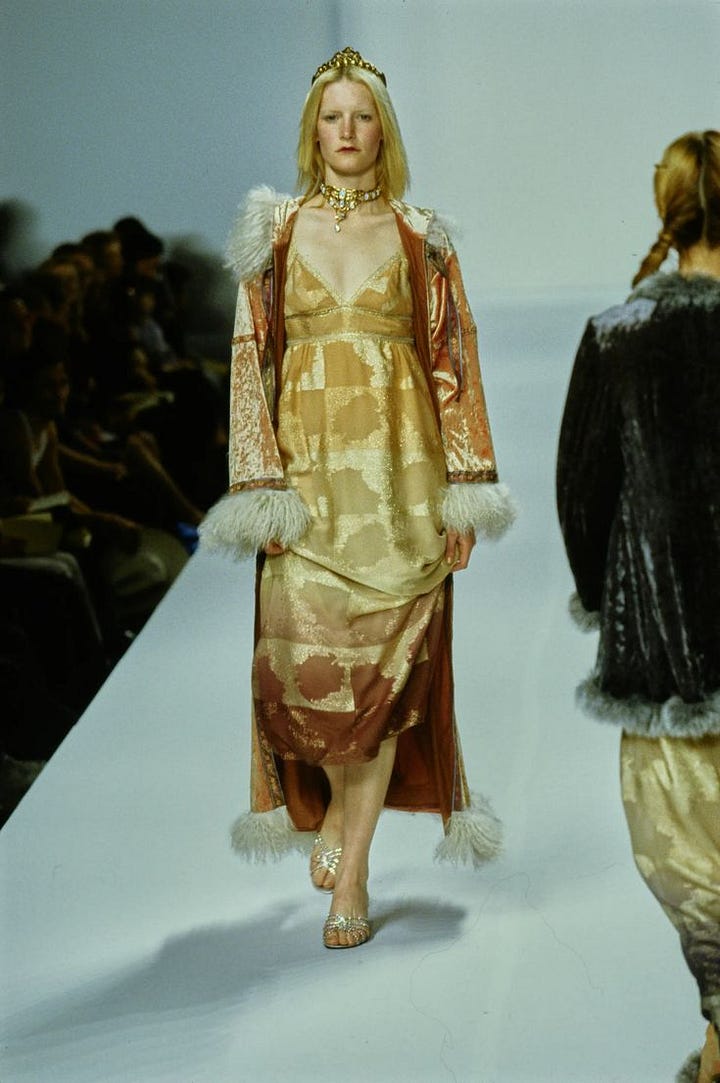
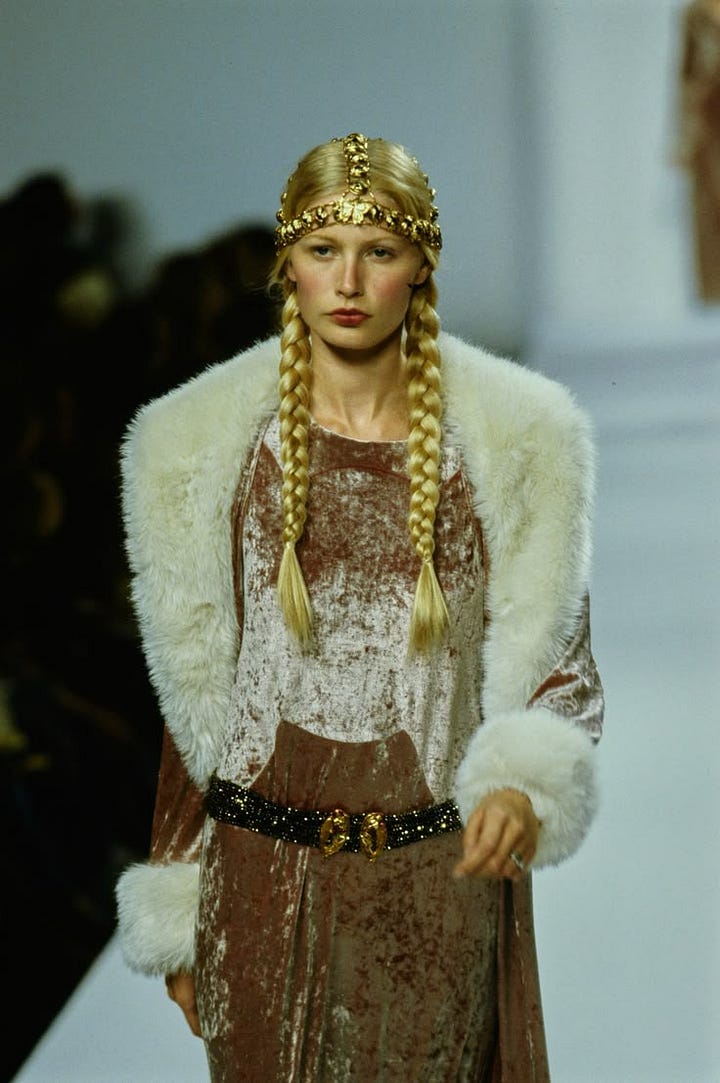
This recurring interest suggests a cyclical pattern: fascination with the medieval as a counterpoint to intense periods of modernity.
The Space Race, the Internet, and now, this new medieval iteration, Castlecore, positions itself against the endless scroll, and, perhaps most of all, imagery made by Artificial Intelligence.
One hundred years before Pattie and Betsey, Pre-Raphaelite artists like Dante Gabriel Rossetti and John Everett Millais drew heavily from medieval art and literature during their intense period of change, the Industrial Revvy.
And like the (Pre-Raphaelite) Bro’s, photographer Julia Margaret Cameron staged elaborate tableaux, costuming her subjects into romanticised visions of the medieval past. Oh, I love you, JMC.
What we call “medieval revival” is, in truth, a stained-glass window of interpretations. The Victorians, in their yearning for a ‘simpler’ past, conjured the medieval world we know. They transformed the Middle Ages into a fairytale, as a refuge from their changing world. And we ate that sh*t up.

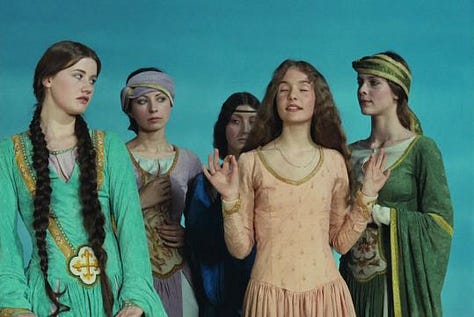
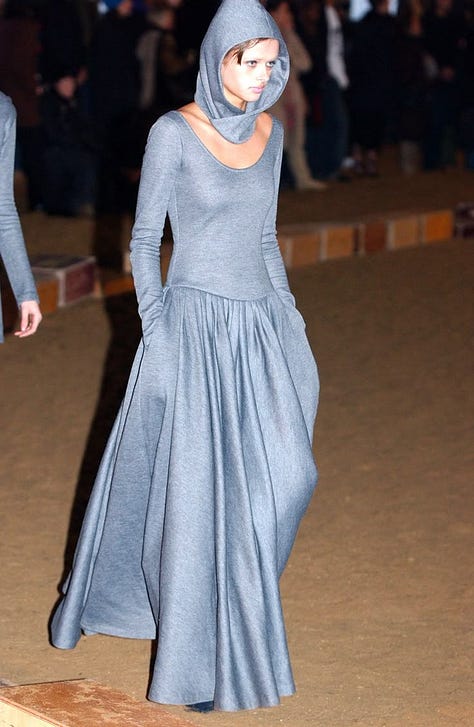
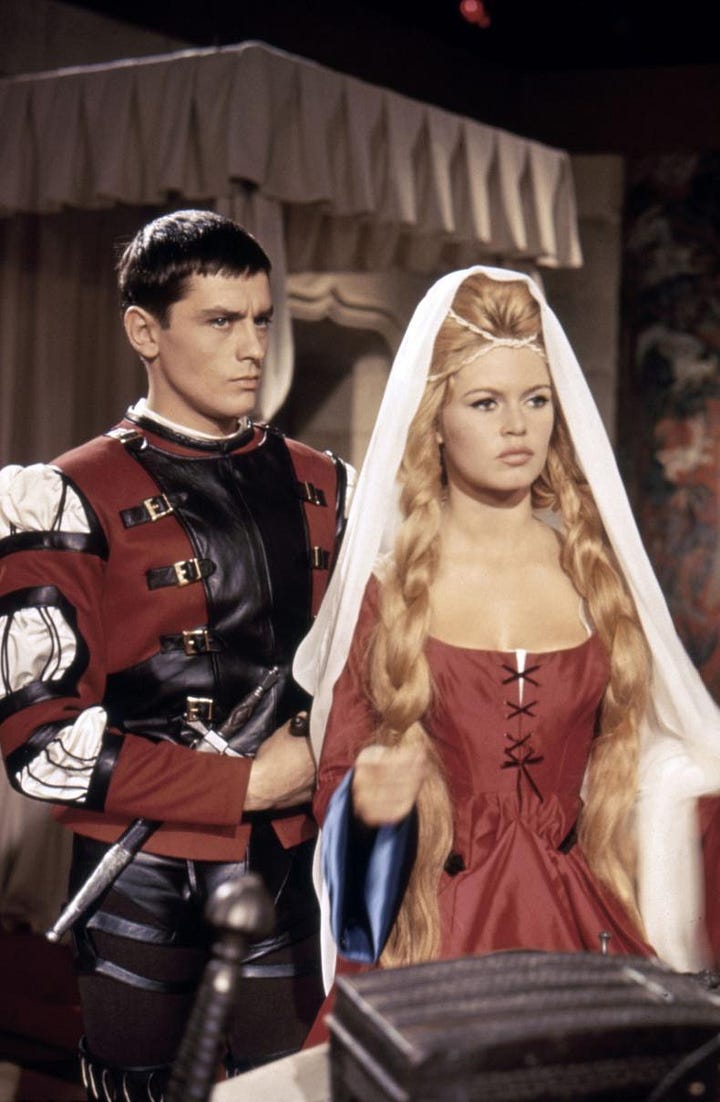
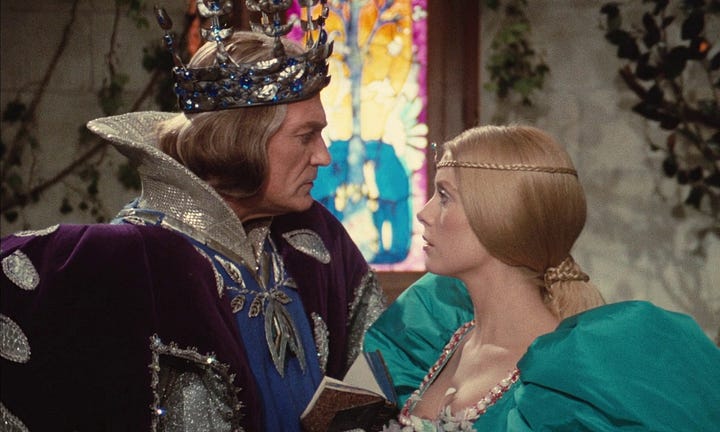
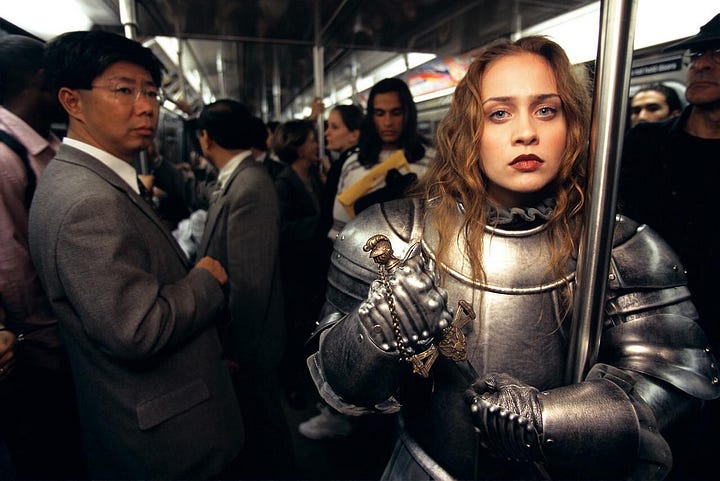
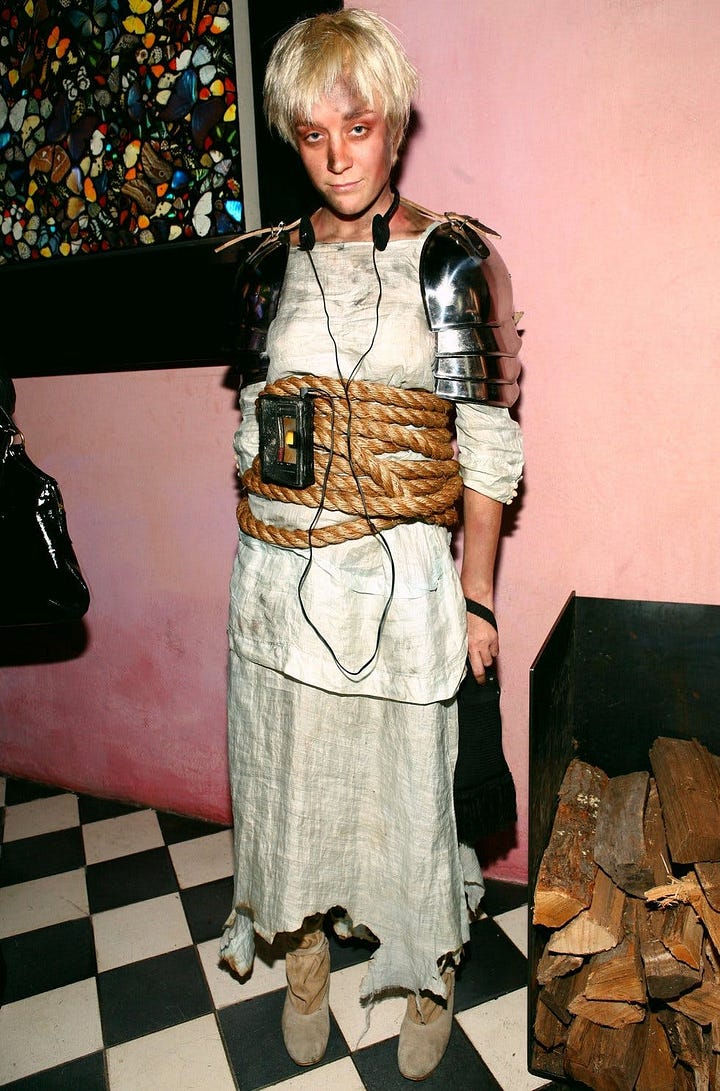
Joan of Arc’s ring sold for $680,000 at auction almost a decade ago, but you can buy a replica by Rickson Jewelry starting at $637 for sterling silver.
Alternatively, on eBay, authentic medieval rings can be found for under $200. The posey ones with inscriptions like “’til forever” fetch higher prices.
Carousels of images on TikTok show us that the ‘Castlecore home’ is characterised by dark wood tables with old church pews as bench seats, hand-dipped beeswax candles displayed in hand-forged candelabras, thick sheepskins in front of the fire.
The colourway draws from gemstones coveted at the time: ruby red, emerald, sapphire, amber, pearl cream, and lapis lazuli.
Think of Margaret of York’s crown for visual reference:
The ultimate fantasy: a firelit room with thick stone walls, protected by a moat; so yeah, escapist. Reaching for armour. It’s the opposite of ‘sad millennial beige’ with its cold-tone LED lighting, and use of ‘the big light’.
-*-*-*-
Just as Joan of Arc predicted the Relief of Orléans, here are my forecasts…
Chore Dresses
Elizabeth Friendship’s book “Making Working Women's Costume” outlines how to make a period-correct one.
Yes, a chore dress, made in muslin, worn with ‘protective elements’ like heavy leather boots. Something Buttercup would wear on the farm in The Princess Bride (1987). You already have that image saved in your brain hard-drive, so here’s Helena:
If worn with a belt, one could be somewhat medievally-historically-accurate and tuck up the excess fabric and secure it.
Or head to the hardware store and get your needle and thread out to fashion something à la Bonnie Cashin:
Dagging
Dagging was a widely popular decorative technique to embellish the edges of garments during the Middle Ages and Renaissance.


It involved cutting or slashing the fabric into shapes, like simple V and U shapes, or more elaborate designs like crenellations (more about that in a moment), scallops, and foliation (leaf shapes).
Lou Dallas's FW2018/19 collection featured a boiled wool purple overtop with an organic imagining of dagging.
I cannot stop thinking about crenellation dagging, the one mimicking castle battlements… I want a little leather miniskirt called ‘The Battlement Mini’.
DIY Elevating What One Already Owns
e.g. Sewing pre-killed fur to line jacket pockets for warmth.
DIY versions of Meret Oppenheim’s fur-snipped fingertip gloves.
Swapping plastic buttons for shell or sterling silver.
Annabella Schnabel creates perfect hand-set sterling silver buttons (some set with precious stones).
Tavern Culture
A heightened embrace of The Pub, and banquets with long tables, silver platters, whole roast chickens, and bottomless crusty bread.
Perhaps scallop shells (used by medieval pilgrims as utensils) could serve as spoons or bowls. Bottomless banquets over bottomless brunch..?
And one more thing:
I think we want to celebrate, or be, the devotee, the obsessive. Someone teaches us, in a two part video, the distinction between mulberry silk and polyester satin. In the medieval world, identity was defined by craft. Surnames like Farrier, Baker, Fletcher, and Miller are testaments to this specialisation. I think there’s a romantic yearning for that sense of purpose.
Anyway, let’s see how Baz brings Joan to the screen this time.

